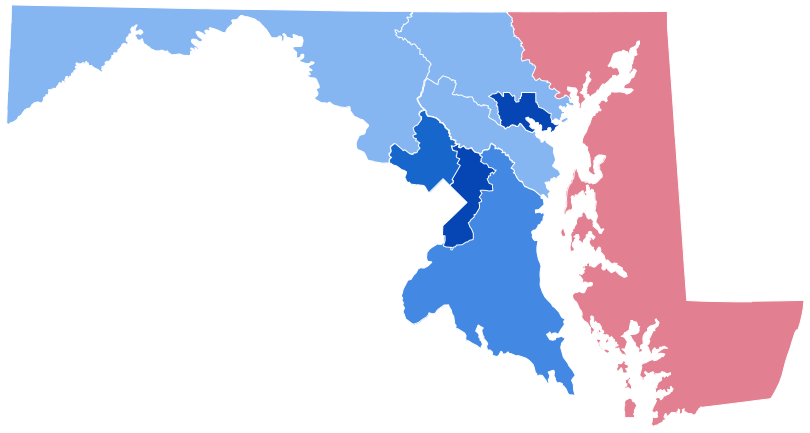Homelessness on the Eastern Shore

Despite large reductions in inflation and unemployment the past two years and the generally improved economy in the United States, a significant number of Americans of all ages don’t have a home.
Being homeless is hard anytime, and downright dangerous in winter. A park bench or an alley isn’t easy for sleeping even in good weather, and when the thermometer dips below freezing, it’s life-threatening.
Here’s an overview of homelessness on the Eastern Shore and what is being done to make life bearable for those in its grip.
According to the National Alliance to End Homelessness, Maryland had an average of 5,349 homeless people a night in 2022, a rate of 8.7 per 10,000 population. While county-by-county data is not available state-wide, the Alliance provides data for 11 “continuum of care” regions, two of which make up most of the Shore. The Mid-Shore region, MD-511, includes Kent, Queen Anne’s, Caroline, Talbot, and Dorchester counties. The three Lower Shore counties, Wicomico, Somerset, and Worcester, are MD-513.
As of 2022, there were 116 homeless people on any given night in the Mid-Shore region, at a rate of 6.68 per 10,000, and 237 in the Lower Shore counties, 13.04 per 10,000 — the second highest rate in the state.
Cecil County belongs to a “Balance of State” continuum of care region, which includes several counties in southern and western Maryland. That region has a homeless rate of 10.58 per 10,000, which is third highest of the 11 districts in the state. The highest concentration of homeless was recorded in Baltimore City, at 27.7 per 10,000.
The good news is that between 2007 and 2022, the number of homeless in the state decreased by 44%. Also, the availability of homeless shelters has increased sufficiently that anyone seeking a bed should, in theory, be able to find one. However, too many people are still without shelter during the coldest months.
The non-profit Samaritan Group works to house Kent County’s homeless population. On its website, the group reports it can serve 15 people in local churches during the winter months. In addition to overnight lodging, the group provides dinners, hot breakfasts, and a bag lunch. Guests are referred by the county’s Department of Social Services and the Chestertown Police Department and must remain drug- and alcohol-free.
According to its website, in 2018 and 2020 the Samaritan Group served an average of 26 individuals per night over the course of the winter — most for multiple nights. It’s not clear if that figure includes people from outside Chestertown, and it’s not known how many others were turned down because of alcohol or drugs (let alone how many never applied).
In Easton, Talbot Interfaith Shelters operates two shelters, one for single men and women, the other for couples and families. According to the group’s annual report, in 2023 the shelters served 110 homeless people including 42 children. The group also offers transitional housing, in which the guests pay a portion of the rent while receiving support and life skill training to allow them to find jobs, hopefully moving to permanent housing on their own.
Church-supported shelters are available in other Shore counties. In Queen Anne’s County, Haven Ministries operates a shelter from October through April, as well as a food pantry and a mobile food pantry truck. In Wicomico County, Christian Shelter in Salisbury provides services. His Hope Ministries operates shelters in Dorchester and Caroline counties. Worcester County’s shelter needs are provided by Diakonia, a non-profit based in Ocean City. Somerset County Health Department also maintains a list of shelters on the Lower Shore.
Much of the work to run the shelters is provided by volunteers, who stay overnight, prepare meals, or do cleaning and general maintenance. Also consider donating your dollars, as shelter finances are dependent on community and individual contributions. For more information on shelters, to learn about volunteer opportunities, or to make a contribution, contact a local shelter or visit the National Alliance to End Homelessness website.
Contact information for Eastern Shore homeless facilities:
Dorchester and Caroline Counties
His Hope Ministries
443-448-7297
Kent County
Samaritan Group of Kent County
https://www.samaritangroupofkentcounty.org/
410-810-7600
Queen Anne’s County
Haven Ministries
410-739-7859 or 410-758-3977, ext. 2062
Talbot County
Talbot Interfaith Shelters
https://talbotinterfaithshelter.org/
410-690-3120
Somerset County
Somerset County Health Department
https://somersethealth.org/homelessness/shelters-and-housing/
Wicomico County
Christian Shelter, Salisbury
https://www.christianshelter.org
410-749-5673
Worcester County
Diakonia West, Ocean City
410-213-0923
For more information on homeless services on the Eastern Shore, Lower Shore residents (in Wicomico, Worcester, and Somerset) can call 443-253-1815. Residents of other Shore counties can call 1-888-407-8018.
Peter Heck is a Chestertown-based writer and editor, who spent 10 years at the Kent County News and three more with the Chestertown Spy. He is the author of 10 novels and co-author of four plays, a book reviewer for Asimov’s and Kirkus Reviews, and an incorrigible guitarist.
Common Sense for the Eastern Shore







